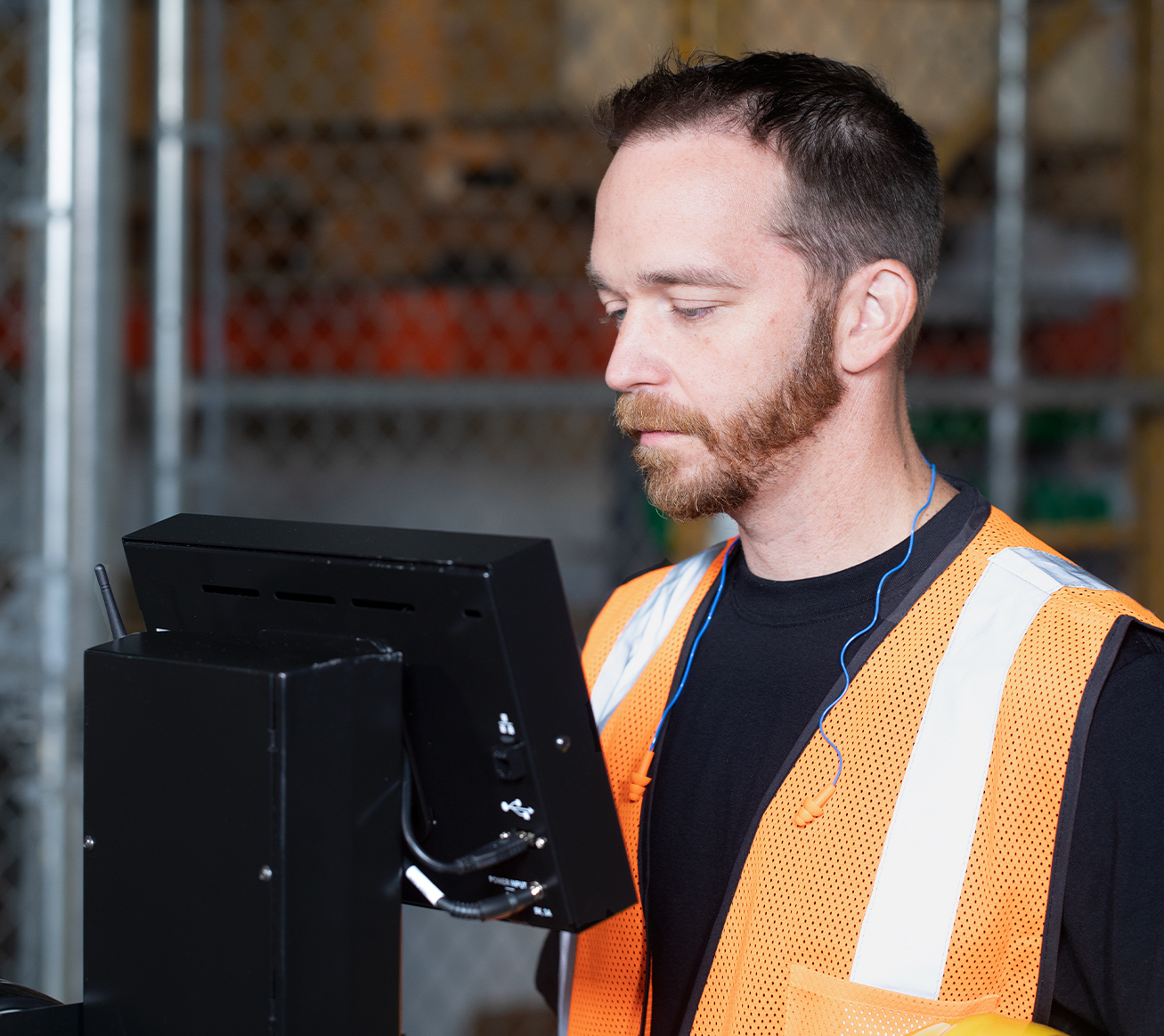To be effective, your temperature screening tools must be safe and accurate. Wello is the only automated, touchless clinical thermometer that has received FDA clearance as a Class II Medical Device. Every station is powered by state-of-the-art components that produce fast, accurate results at every screening.
Wello’s no-contact, precision technology
Unlike camera-based solutions, Wello’s system architecture uses a unique combination of infrared optics, embedded sensors, and a dedicated signal processor to measure temperature from a specific area on the face. The result — an accurate and repeatable screening status for each person.
Key technologies include:
- AI — directs the person to align with the sensors, ensuring the sensor measures the same site across all faces.
- Infrared optics — block stray infrared from the area around the target.
- Embedded sensors — take the measurement of the infrared optics and narrow the sensory system to the lower forehead area of the ophthalmic artery (inner canthus).
- Dedicated signal processors — processes out infrared noise in 500 measurements per second.
The welloStationX in action
Inside every welloStationX is a complete electro-optical sensory system designed to capture body temperature readings with incomparable accuracy. The entire process happens within seconds.
1) Optional pre-screen questionnaire offsets any false positive or false negative readings
- The kiosk screen displays a short (customizable) questionnaire to capture any potential virus symptoms and exposure.
- If cleared, the individual proceeds with temperature screening.
- If not cleared, the individual is blocked from proceeding.
2) Station prepares an individual for measuring their temperature
- Facial detection confirms that a person’s face is positioned correctly at the kiosk.
- If not, auditory and visual prompts help a person correctly position their face on the kiosk screen (optimized for those with vision or hearing impairment).
- The system zeros in on the best area of the face to read temperature: a 1” area around the inner canthus (tear duct).
3) Infrared sensors capture readings from the target area on the face
- A powerful semiconductor maps a vast amount of surface area to be read — 100x to 1000x more than a thermophile or camera system.
- Using infrared optics, the semiconductor captures 500 temperature readings per second.
- Separate infrared sensors capture data outside of the target area, removing peripheral heat from the measurement.
- Precision thermistors obtain a reference temperature, limiting any drift or thermal shock.
4) Data is processed and a final measurement is established
- All readings are processed by a dedicated signal-to-noise processor within the welloStationX to remove any unnecessary data.
- The final temperature, correlated with a standard oral temperature scale, is also compared to the set temperature threshold for indication of fever.
- All information is logged in the system.
- The end-to-end measurement process takes less than three seconds.
5) The system determines the individual’s screening status
- The individual receives their temperature reading and screening status on the kiosk screen.
- If cleared, a confirmation sticker is printed.
- If not cleared, a notification is sent to a designated manager or response team.
Automated non-contact infrared thermometers vs. thermal cameras
Wello is the only automated, FDA-cleared non-contact infrared thermometer, producing more accurate results than lower quality camera-based systems.
Automated Non-Contact Infrared Thermometer (NCIT)
Tested in a clinical setting which addresses the holistic conditions of human illness as it manifests in the body.
Thermal Camera
Tested in a laboratory setting which uses inorganic objects to measure 1:1 temperature relationships.
Automated Non-Contact Infrared Thermometer (NCIT)
Designed to measure the exact temperature of a target zone.
Thermal Camera
Designed to measure relative temperature over a large area with low quality pixelated thermograph output.
Automated Non-Contact Infrared Thermometer (NCIT)
Uses 100x-1000x the amount of sensory surface area in a 1” target zone on the face.
Thermal Camera
Covers a less dense surface area across the entire face.
Automated Non-Contact Infrared Thermometer (NCIT)
Requires FDA clearance as a Class II medical device, specifically product code FLL (Clinical Electronic Thermometer).
Thermal Camera
Usually not FDA cleared. Some devices are marketed as FDA-cleared because they have clearance as a Class I medical device, for use in gynecological applications, not in detecting human body temperatures (Product code: LHQ).
Automated Non-Contact Infrared Thermometer (NCIT)
Temperature readings provided by an NCIT do not require a “second screening” due to the precision technology and verified accuracy of the device.
Thermal Camera
Temperatures provided by a camera require a follow-up screening by a medical device (like an NCIT or welloStationX) to ensure accurate results.
Most employers only conduct second screenings of those with elevated temperatures, which increases the risk of letting someone with a false negative status into the building.
Automated Non-Contact Infrared Thermometer (NCIT)
Calibrated within a lab, good for 10 years.
Thermal Camera
Requires frequent calibration.
Automated Non-Contact Infrared Thermometer (NCIT)
No operator is required for a self-service NCIT station.
Thermal Camera
Complex thermal camera “systems” require an operator to be present.
